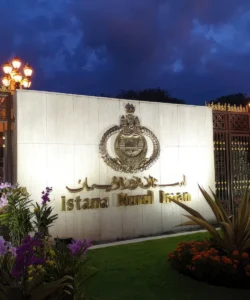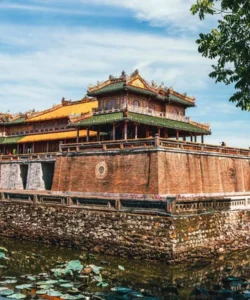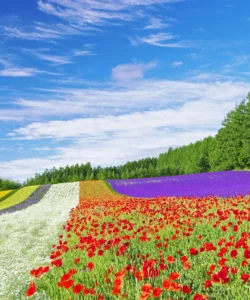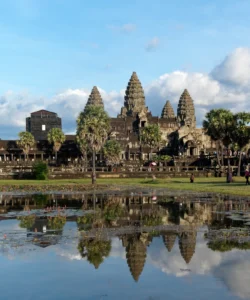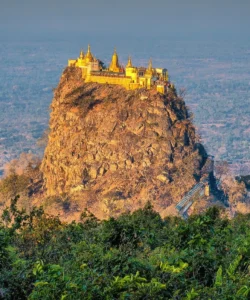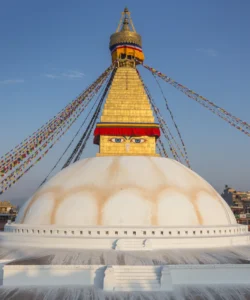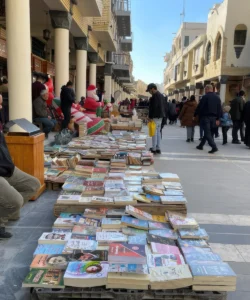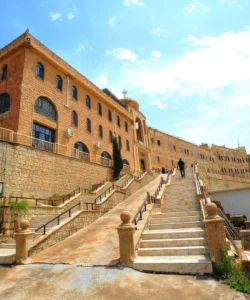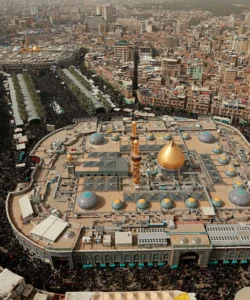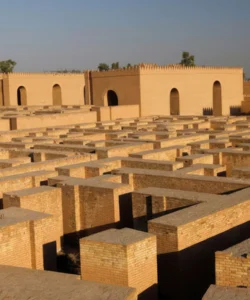The Hatra Archaeological Site is a remarkable fortified city located in northern Iraq, a profound testament to the cultural and architectural fusion that defined the ancient Near East. It is a UNESCO World Heritage site and a poignant symbol of both a glorious past and the tragic realities of modern conflict.
Name: Hatra Archaeological Site (Arabic: الحضر, al-Ḥaḍr)
Address: Hatra is located in the Al-Jazira region of northern Iraq, between the Tigris and Euphrates rivers. It is approximately 110 kilometers (68 miles) southwest of Mosul and about 290 kilometers (180 miles) northwest of Baghdad.
How to Get There:
Travel to Hatra is currently extremely difficult and unsafe for general tourism due to political instability and security concerns. The site has been a flashpoint for conflict. The following information is for historical context and is not a recommendation for travel.
- By Air: The closest international airport is Baghdad International Airport (BGW), and the closest domestic airport would be in Mosul. From either city, a long and dangerous road trip would be required to reach Hatra.
- By Road: Hatra is located in a remote, semi-desert region. In more stable times, a vehicle with an experienced guide would be necessary to reach the site.
Landscape and Architecture:
Hatra’s “architecture” is a magnificent and unique blend of Greco-Roman, Hellenistic, and Eastern decorative styles, creating a unique synthesis that reflects its position as a major caravan city on the trade routes between the Roman and Parthian Empires.
- UNESCO World Heritage Site: Hatra was inscribed on the UNESCO World Heritage List in 1985. Due to damage from recent conflicts, it was added to the List of World Heritage in Danger in 2015.
- Double City Walls: The city’s most prominent architectural feature is its impressive, fortified circular plan. It was encircled by massive inner and outer walls, nearly 6.4 kilometers (4 miles) in circumference, and reinforced by over 160 towers. These high, thick walls, made of stone and gypsum, enabled the city to withstand repeated Roman sieges in A.D. 116 and 198.
- The Great Temple: The central and most magnificent structure is the Great Temple, a massive religious complex dedicated to the sun god, Shamash. It is a masterpiece of Parthian architecture, featuring barrel vaults and monumental columns. The temple is famous for its intricate stone carvings, reliefs, and statuary that show a fascinating blend of Eastern and Western influences.
- A Pantheon of Gods: The city was a major religious center known as “Beit ʾElāhāʾ” (“House of God”). Its numerous temples were dedicated to a diverse pantheon of deities, including Aramean, Mesopotamian, and Arabian gods alongside Greek and Roman ones. This religious diversity is a key aspect of Hatra’s cultural identity.
- Iwans: A distinctive feature of Hatra’s architecture is the use of iwans—large, vaulted halls that are open on one side—which were a Parthian innovation. These were used in many of the city’s religious buildings and were a precursor to a common architectural element in later Islamic structures.
- Sculptures and Statues: Hatra is rich in sculptures and statues that portray gods, royalty, and religious figures. These carvings often combine the classical realism of Greek and Roman art with the more stylized, frontal, and decorative art of the East. The sculptures and inscriptions found at the site are invaluable historical sources.
- Recent Destruction and Restoration: The site was a focus of conflict and was used as a training camp by extremist groups between 2015 and 2017. A video emerged showing the destruction of statues and decorations. Fortunately, restoration efforts have been underway since 2017 to repair the damage and protect the site.
What Makes It Famous:
- Unique Architectural Fusion: Hatra is globally famous for its unique and harmonious blend of Hellenistic, Roman, and Eastern architectural styles. It is considered the best-preserved and most informative example of a Parthian city.
- Strategic Buffer City: The city’s strategic location as a buffer between the Roman and Parthian empires made it a powerful military and trading center. Its ability to repeatedly resist Roman sieges is a testament to its military might.
- Religious Center: Hatra’s reputation as a “House of God” with a diverse pantheon of deities highlights its role as a major religious hub and a place of cultural exchange.
- A Symbol of Resilience: Its modern history of destruction and subsequent restoration has made Hatra a powerful symbol of the resilience of cultural heritage in the face of conflict and the international efforts to protect it.
- Historical Source: The archaeological site, with its numerous inscriptions and sculptures, provides invaluable information on the history, culture, and social life of the ancient Arab kingdoms that ruled the city.
Differences from Some Other Wonders:
- Syncretic Architectural Style: While other sites like the Archaeological Remains of the Bamiyan Valley are famous for a fusion of cultures, Hatra’s is a distinct and unique synthesis of Parthian, Hellenistic, and Roman elements in its architecture and art, which is unparalleled in the region.
- Circular City Plan: Unlike the linear urban plan of Samarra or the organic growth of Old Kandahar, Hatra’s circular city plan with double defensive walls is a specific and famous feature.
- Barrel-Vaulted Iwans: The innovative use of the iwan as a central architectural element is a hallmark of Hatra’s style, a precursor to similar structures in later Islamic architecture.
- A “Living” Example of Conflict and Restoration: Like Darul Aman Palace, Hatra’s modern identity is tied to its recent history of being deliberately destroyed and then the subject of painstaking restoration, making it a very different kind of historical wonder than one that has simply survived centuries of natural decay.
- Focus on a Specific Historical Period: While Old Kandahar is a layered city with millennia of history, Hatra’s fame is rooted in its brilliance during a more focused period: its zenith under the Parthian Empire, from the 1st to the 3rd centuries CE.
Hatra Archaeological Site Photos:































